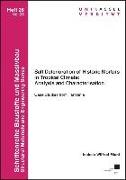Salt Deterioration of Historic Mortars in Tropical Climate: Analysis and Characterisation
BücherAngebote / Angebote:
The contribution of this study to the general body of knowledge is in providing an understanding of the thermodynamic behaviour of soluble salt mixtures in historic buildings located in the tropical marine zone of Tanzania. This tropical zone is found in the eastern part of the country along the Indian Ocean coast. This research is geared towards informing the general public, most of whom believe that salt crystallisation is the main cause of historic buildings deteriorating. This belief emanates from the understanding that historic buildings in a marine environment are highly susceptible to salt crystallisation, more so because they tend to receive daily oceanic spray which contains salt. The problem is aggravated by the encroachment of the ocean on these buildings. Salt crystallisation on these structures is further complicated by air pollution owing to rapid urbanisation in these areas. It is worth noting that salt crystallisation is an extremely complex process and its effect depend on many variables including climate. Ten historic buildings involved in this study are located in three different areas of the country. Eight historic buildings are located in the tropical climate 1 - 200 m from the Indian Ocean, and two historic buildings are located in inland Tanzania 190 km and 589 km from the ocean. These two historic buildings experience a modified tropical climate and semi-arid climate. The criteria for selecting the buildings considered variations and the extent of salt deterioration in different parts of the country.
The main goal of the study was to embark on a detailed analysis of the salt deterioration on Tanzanian historic buildings which has not hitherto been fully investigated and to provide a sustainable solution to the problem through climate control. This solution is needed, since there is no approved conservation programme and as a result of existing government budgetary constraints, very little conservation research has been done on any site or monuments except those registered under UNESCO. The research results of this project contributes to solving the existing monument research gap, thereby stimulating the initiation of a sustainable restoration programme, together with the provision of the much needed government research tools. This research provides information on the type of construction and building materials used during the construction of these buildings. Such information is vital in salt analysis and in futurerestoration, conservation and consolidation of these buildings, which provides a substantial income to the country through the tourist industry. There are also other factors like the preservation of the history and culture of the country and job creation.
The abundance of chloride (Cl-) ions of magnesium (Mg2+), sodium (Na+), and potasium (K+) in these buildings as identified by this study explains the survival of the historic buildings in the tropical marine areas of Tanzania. These ions can lead to the formation of halite (NaCl), sylvite (KCl), bischofite (MgCl2.6H2O), ammonium chloride (NH4Cl) and antarcticite (CaCl2.6H2O), depending on their presence and quantity in the walls of historic buildings. The results of ECOS/RUNSALT program indicate that salt is not the major problem because the major ions hitherto detected form salts like halite and sylvite, are mostly in liquid form. Under a high evaporation rate these salts easily migrate to the surface of the building's walls whereby a supersaturated solution is formed leading to surface crystallisation. The surface crystallisation is evident in salt profile analysis by photospectrometry, whereby the quantity of soluble salt ions decreases with depth. The detachment of protective rendering, the peeling off of paint and efflorescence in the investigated historic buildings in tropical marine areas of Tanzania is evidence of surface crystallisation. Mirabilite (Na2SO4.10H2O), gypsum (CaSO4.2H2O) and epsomite (MgSO4.7H2O) can crystallize in tropical areas. The SO42- and NO3- ions detected in these buildings are so scanty as not to cause ionic interactions needed for the formation of destructive sodium sulphate (Na2SO4) except in the Cooperation Building where SO42- is as high as 1.8 % w/w. However, this is not a trivial problem and should not be ignored, especially because of the destructive nature of Na2SO4 and the increase in air pollution.
Laboratory simulation of the three environmental conditions using two salts, Na2SO4 and NaCl, provided similar results on the exposure of lime mortar samples in 50% Relative Humidity (RH) and 20oC, 75% RH and 28oC and 85% RH and 28oC. Samples exposed to 85% RH and 28oC in a controlled environment showed enormous deterioration due to crystallisation of Na2SO4.
Subsequently, NaCl is the major salt and is always in the solution. Reducing this salt is necessary to avoid associated damage like the formation of microorganisms. Thehygroscopic nature of NaCl retards the drying of materials, hence keeping the walls moist all the time, creating a conducive environment for biocolonisation. Routine desalination is necessary to keep the wall dry. In future, Na2SO4 and magnesium sulphate (MgSO4) will be a problem. Therefore, the RH within a building located in a tropical marine environment should be protected from frequent RH variations to prevent the damage associated with sulphate salts, that is only if the current trend of air pollution (i.e. an increase of 6% (WHO, 2014)) is mantained or increased.
Folgt in ca. 2-3 Arbeitstagen
